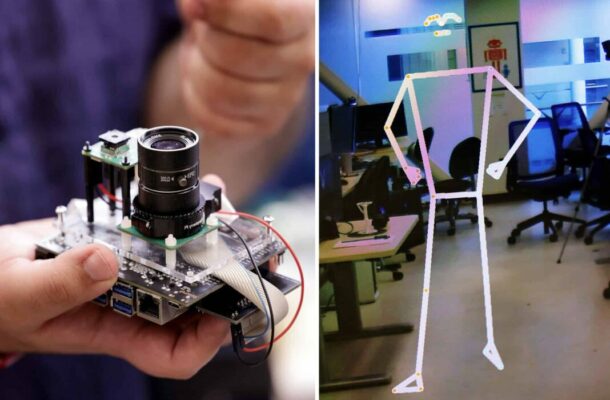Discover PrivacyLens, the innovative technology from the University of Michigan that protects your privacy by turning you into a cartoon, ensuring ano
Discover PrivacyLens, the innovative technology from the University of Michigan that protects your privacy by turning you into a cartoon, ensuring anonymity in photos and videos.
Introduction: In an era where privacy concerns are at an all-time high, a groundbreaking technology from the University of Michigan promises to revolutionize how we safeguard our identities. PrivacyLens, an ingenious creation by a team of engineers, aims to provide robust privacy protection by transforming individuals into cartoon-like figures in photos and videos, making it nearly impossible to identify them.
PrivacyLens: A New Frontier in Privacy Protection
Innovative Technology with Dual Cameras
PrivacyLens utilizes a combination of an ordinary video camera and a camera equipped with a thermal sensor. This innovative setup detects the body heat of individuals within the camera’s field of view. Once detected, the system converts their likeness into a generic drawing, effectively turning people into caricatures. This unique approach ensures that while devices relying on the camera function seamlessly, the privacy of the individuals being recorded is safeguarded.
Real-Time Anonymity
The brilliance of PrivacyLens lies in its ability to reflect real people accurately while maintaining their anonymity. The numbers and movements captured are true to life, enabling devices to operate without any issues. Yet, the individuals’ identities remain concealed behind cartoonish depictions, providing a novel way to protect privacy in an increasingly surveilled world.
Adjustable Privacy with a Sliding Scale
Customizable Privacy Settings
One of the standout features of PrivacyLens is its sliding privacy scale. This added layer of protection allows users to control the extent to which their face and body are censored. Whether one prefers minimal alteration or a high level of anonymity, the sliding scale offers flexibility to meet various privacy needs. This customization ensures that users can tailor their privacy settings to their comfort level, making PrivacyLens a versatile tool for a wide range of applications.
Balancing Functionality and Privacy
While PrivacyLens ensures high levels of privacy, it does not compromise functionality. The technology has been designed to ensure that devices dependent on camera inputs continue to work efficiently. By balancing these two critical aspects, PrivacyLens offers a practical solution that does not hinder technological advancement or user experience.
The Future of PrivacyLens
Current Research and Development
Currently, PrivacyLens is in the research phase, with ongoing studies and developments aimed at refining the technology. The research team at the University of Michigan is optimistic about the potential of PrivacyLens to become a commercially available product. If successful, this could mark a significant advancement in privacy technology, offering individuals a reliable way to protect their identities in a variety of settings.
Commercial Potential
The implications of PrivacyLens reaching the market are profound. From enhancing privacy in public surveillance systems to providing anonymity in social media content, the commercial potential of this technology is vast. As privacy concerns continue to grow, the demand for innovative solutions like PrivacyLens is likely to increase, paving the way for its adoption in various sectors.
Conclusion: A New Era of Privacy Protection
PrivacyLens represents a pioneering step forward in the quest to protect personal privacy in an increasingly digital world. By turning individuals into cartoon-like figures and offering customizable privacy settings, this technology promises to address the growing concerns around surveillance and data privacy. As it moves closer to potential commercial release, PrivacyLens could soon become an indispensable tool for those seeking to safeguard their identities in a world where privacy is ever more elusive.

COMMENTS